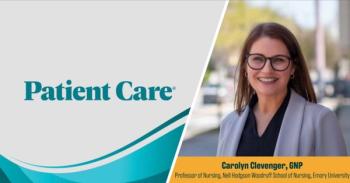
Updated COPD Guidelines: New Treatment Paradigm for Stable Disease
The revised GOLD guidelines redefine treatment objectives, change standards for the use of spirometry, and redefine exacerbation, with special emphasis on comorbidities.
The
The revised edition "provides a new paradigm for treatment of stable COPD," the authors state in the introduction.1
Among the noteworthy changes:
• Treatment objectives are now organized into 2 groups
(1) immediately relieving and reducing the impact of symptoms, and
(2) reducing the risk of adverse health events over the long term.
• The system for classifying COPD severity has been changed. Rather than designating stages based on FEV1 measures only, the guidelines now classify severity by “grade” based on a fixed ratio (post bronchodilator FEV1/FVC < 0.7) to define airflow limitation. The change reflects the facts that FEV1 alone is now judged an unreliable marker of severity and that the heterogeneity of COPD at the individual level is understood better than in 2006.
The new system also limits classification to 4 grades (mild, moderate, severe, and very severe) rather than 5.
• The guidelines recommend that clinicians incorporate symptom assessment tools into treatment decisions. Specifically, they recommend using the COPD Assessment Test (CAT) every 2 to 3 months to identify “trends and changes,” rather than relying only on annual spirometry and/or the Modified British Medical Research Council (mMRC) questionnaire to assess symptoms.
When evaluating treatment, they recommend asking patients:
– Have you noticed a difference since starting this treatment?
– If you are better:
Are you less breathless?
Can you do more?
Can you sleep better?
Describe what difference it has made to you. Is that change worthwhile to you?
• The new guidelines call for diagnosing COPD on the basis of symptom severity, risk of future exacerbations, severity of spirometric abnormality, and identification of comorbidities. Rather than requiring spirometry to “support a diagnosis,” as in the old guidelines, they recommend requiring it only to make a “confident diagnosis” of COPD.
• There is a new chapter on therapeutic options, including non-pharmacologic interventions.
• The updated guidelines place greater emphasis on comorbidities, both on managing them in patients with COPD and on managing COPD in patients with comorbidities. Indeed, they contain an entire chapter focused on cardiovascular disease, osteoporosis, anxiety and depression, lung cancer, infections, metabolic syndrome, and diabetes.
• The definition of an exacerbation has been revised. It is identified as “. . . an acute event characterized by a worsening of the patient’s respiratory symptoms that is beyond normal day-to-day variations and leads to a change in medication.”
A pocket guide and teaching slide set accompany the full text of the guidelines on the
References:
REFERENCE:
1. Global Strategy for Diagnosis, Management, and Prevention of COPD. Updated December 2011. Available at: http://www.goldcopd.org/. Accessed February 16, 2012.
Newsletter
Enhance your clinical practice with the Patient Care newsletter, offering the latest evidence-based guidelines, diagnostic insights, and treatment strategies for primary care physicians.

















































































































































































































































































